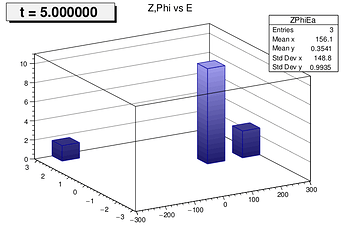Hi @matevz ,
Thanks for the alice_esd tip, as I digest the materials I hope you don’t mind if I keep this thread alive, by asking additional related, but separate, questions.
I have made some progress with my script qpbr_tracks.C (14.8 KB) and was able to implement the time “loop” we discussed earlier with a TPad window, e.g.,
in an “animated” fashion.
My current question is: is there a quick way to embed something like this TPad itself in a TEve tabbed window? Similar to what I have done for the other views/scenes in my script?
Thanks!
Pietro
